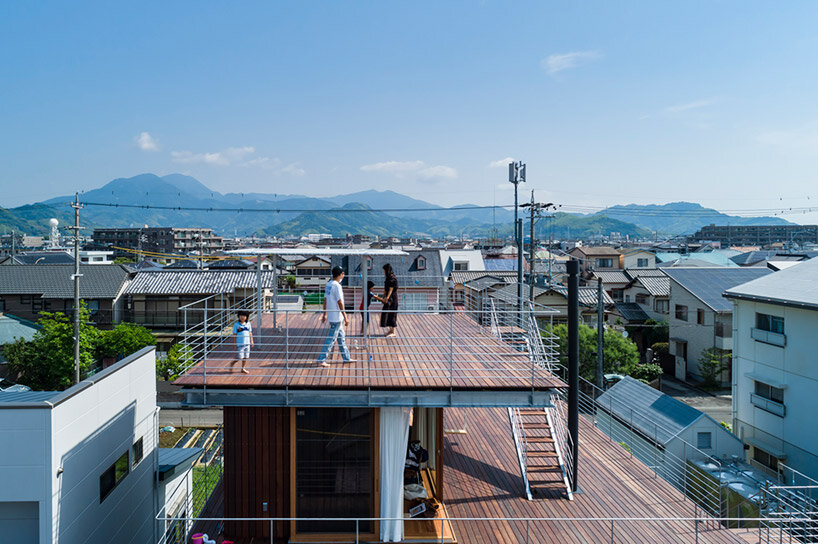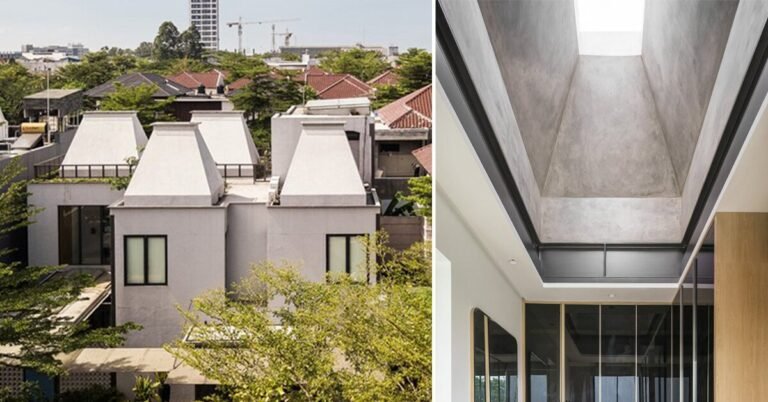tezuka architects optimizes views of mount fuji from its terraced ‘fort home’
mount fuji and the terrace
tezuka architects presents its ‘castle house,’ built in shizuoka with stunning views of mount fuji. during the design of the project, the team notes that ‘every japanese person has a longing for the barren mountain, which is nothing more than a pile of pumice erupting from beneath earth’s surface.’ the view of mount fuji, paired with the faint sound of running water and surrounding farmland lends a bucolic nature to the residential neighborhood.
due to a local residential rule, the height of the castle house does not exceed that of its neighbors. because most of the homes in shizuoka have conventional pitched roofs, privileged views of mount fuji are limited to a second story window to most in the area. the architects note: ‘therefore, the act of ‘climbing upwards’ has always been naturally embedded into the daily lifestyle of japanese people.’
 images © katsuhisa kida / FOTOTECA | @katsuhisakida
images © katsuhisa kida / FOTOTECA | @katsuhisakida
a castle house in the air
tezuka architects (see more here) designs its castle house as an unfolding journey upwards, so that the scenery changes as its occupants ascend to the top. the team tells designboom: ‘this may seem obvious at first but it’s not the same as going upstairs. when the house is lifted up with large overhanging decks, the perception of the scenery and lifestyle changes.‘
like ‘a side dish placed on a cutting board,’ the main living spaces are flipped over, a reverse of conventional architecture. these ‘cutting boards’ function both as roofs, and as platforms to host living spaces. the architects elaborate: ‘a home is found on this house of floating boards, just as the interior is only possible if there is the shell of architecture.‘
living in mid-air allows for an element of ‘open privacy.’ directionally, human’s perception of the environment is generally either horizontal or vertical. the architects explain: ‘if you shift your focus upwards and continue walking, you’ll get caught in holes and ditches. therefore, being on a higher ground creates a subtle sense of privacy enabled by gravity.’

living among a garden
tezuka architects comments on the spirit of its castle house: ‘humans cannot live apart from nature. it is not just the basic requirements such as oxygen and water, but the ecological system as a whole cannot be separated. modern people can no longer cope with the real outdoors. a good relationship with the external environment is needed.
‘just as a person cannot eat a tree bark or an animal as a whole, a person cannot live without nature. that’s why a garden is considered in the design of the house. gardens are a natural alternative to humans who belongs to nature.
‘but one cannot live in the garden as a garden is an environment to be indulged in. people can live on this deck where privacy is maintained and where long spanning eaves shield the inhabitants from rain, free from the muddy soil.’





